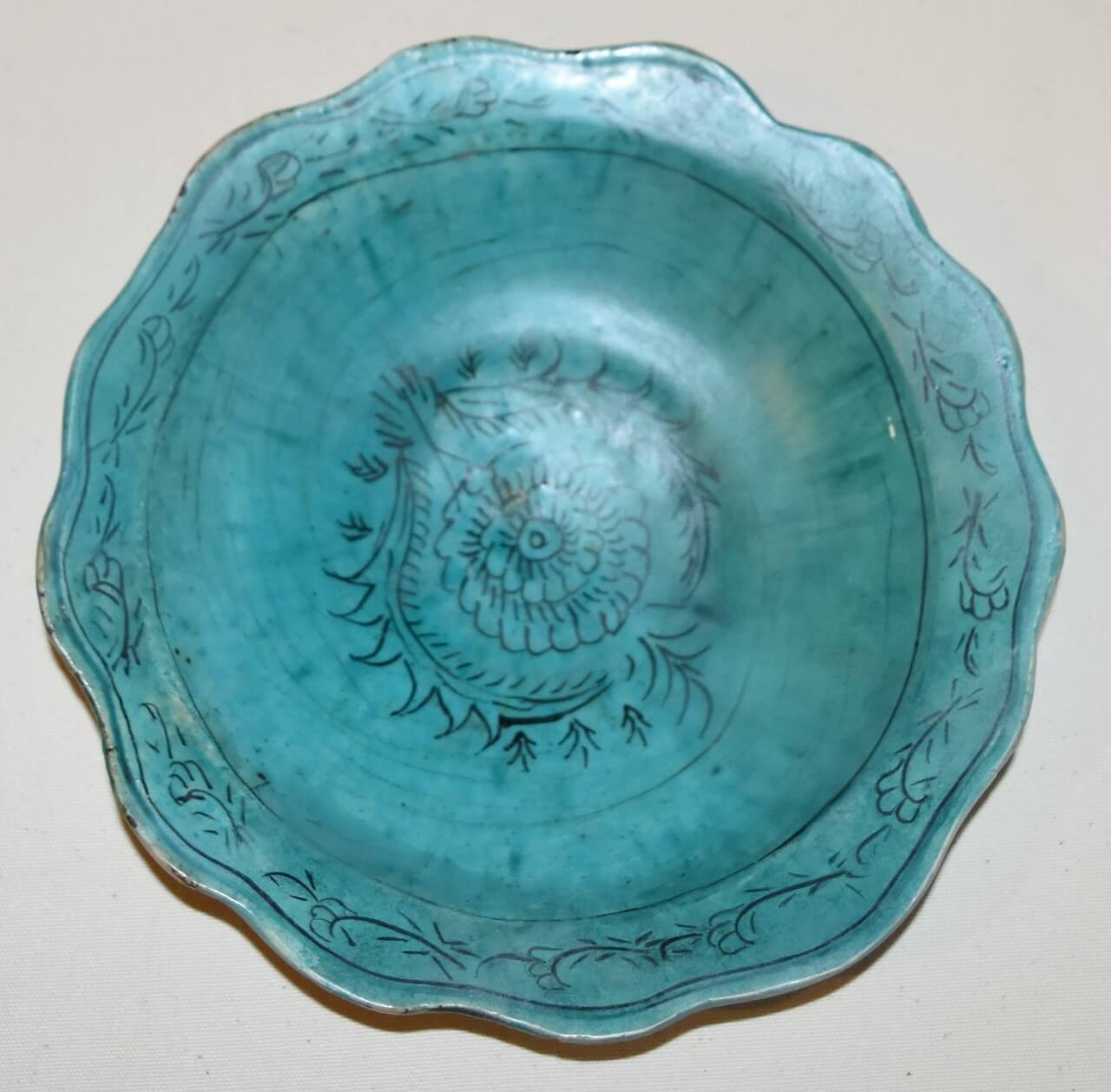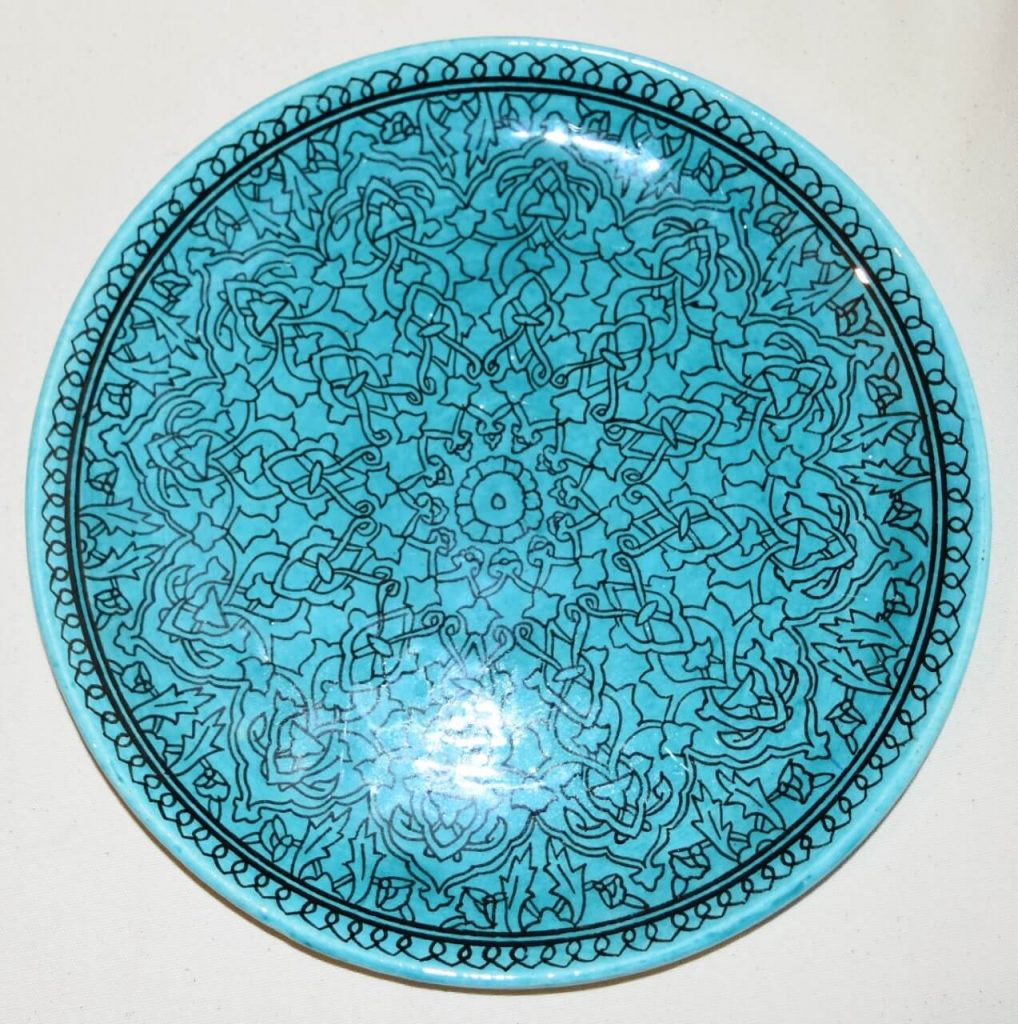

Pottery workshops, in which the homonymous ceramics were made, had been operating in the city of Iznik in Asia Minor since the 16th century. These ceramics, with their bright colors and floral designs, become sought-after both at the time of their production and later in the 19th century by Europeans.
Iznik’s workshops supplied the Sultan’s palace with various pots and tiles to decorate secular and religious buildings. Tulips, roses, carnations, cypresses were the most common patterns. This production continued until the 17th century, when it gradually declined and the production centre moved to Kiutachia in Asia Minor. The success of the pottery workshops, which were in the hands of Armenians, was seen In Kioutacheia from the 18th century on. Toward the end of the 19th century, Armenian and Greek potters attempted to revive the past by replicating 16th century motifs. Tiles with the well-known floral decoration such as tulips, carnations and long saz leaves adorned public and private buildings.
Starting in the early of the 20th century, and especially after 1922, potters from Kioutacheia fled to Greece. In 1923, Minas Pesmazoglou from Asia Minor founded the Kioutacheia factory in Faliro, where the knowledge and experience of the refugees was utilized. Production at these workshops continued the tradition of Kioutacheia and highlighted the decorative motifs of Iznik along with Greek themes. The colors were bright – cobalt blue, green, turquoise, purple, coral and yellow.
Decorative items produced included plates, bottles (carafs and decanters), vases and candlesticks which bore the inscription “KIOUTACHIA – ATHENS”. The domestic elite of the time embraced these and used them as decorative elements in prestigious public buildings such as the Greek Parliament, the branches of the National Bank of Greece throughout the Greek territory and private residences of the upper social class.
Financial problems and a lack of state subsidies forced Minas Pesmatzoglou to resign in 1947. The factory continued under new management but permanently closed in 1955.
The collection of brothers Victor and Kriton Dialynas, which they donated to the Museum, consists of 100 pieces. One display is of late 19th century Turkish origin while the rest are from KIOUTACHIA ATHENS.





© pleam.gr All Rights Reserved. | Made with ❤